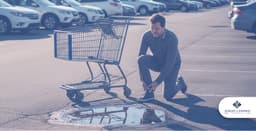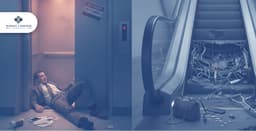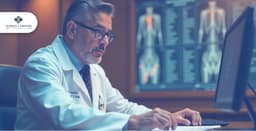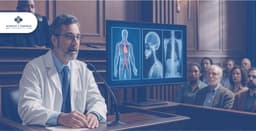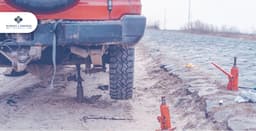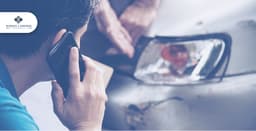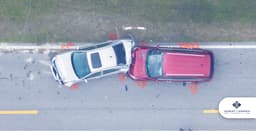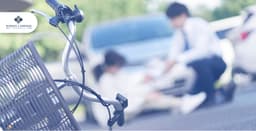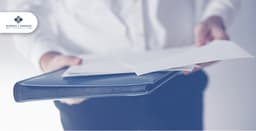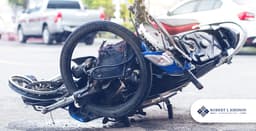
February 22, 2025
Digital Evidence Trap Using Technology to Prove Fault in Motorcycle Accidents
In the courtroom, evidence is everything. And when it comes to motorcycle accidents, it’s not just about who tells the better story—it’s about who has the facts to back it up. We now have powerful tools like cameras, sensors, and data recorders that act like digital witnesses, capturing exactly what happened before, during, and after a crash. These "digital evidence traps" can be transformative in motorcycle accident cases.
These will provide objective proof and cut through the "he said, she said" confusion. Let's explore how these technological tools can help prove fault, get you the compensation you deserve, and ensure that the truth of what happened on the road comes to light.
What Are Tech-Trap and How to Use Them to Prove Fault in Motorcycle Accidents
When it comes to proving fault in motorcycle accidents, technology has become an indispensable ally. These “tech traps” are tools like cameras, black boxes, GPS data, and digital forensics that help uncover the truth about what happened during an accident. Through these proofs, you can establish negligence, which is lack of care.
Most driving errors, like drunk driving or aggressive driving, count as a lack of care. In legal terms, you need to prove negligence by a preponderance of the evidence. This means it’s more likely than not that the other driver was at fault. So, here’s how they work and why they matter.
1. Surveillance, Traffic and Dash Cams
Ever heard the saying, “A picture is worth a thousand words”? In motorcycle accidents, video footage can be worth even more. Surveillance cameras, traffic cams, and dash cams often capture critical moments before, during, or after a crash. This footage can clearly show how the accident occurred and who is at fault.
However, using video evidence in court isn’t as simple as pressing “play.” Attorneys need to prove that the footage is authentic and unaltered. This requires a solid chain of custody to show the footage hasn’t been tampered with. Pretrial persistence also matters—sometimes, the right camera isn’t directly at the accident site but a few blocks away, capturing an important angle or moment.
2. Mounted Cameras

Mounted cameras, like helmet-mounted GoPros or dashboard cams, are invaluable evidence for motorcyclists. They record every second of your ride, offering a complete view of what led to the accident, the crash itself, and what followed.
This type of footage is particularly valuable in cases involving distracted drivers. A camera can provide undeniable proof that the other driver was at fault, reducing the risk of false accusations. Mounted cameras also speed up claims by giving insurance companies and lawyers clear evidence of what happened.
3. Telematics
Telematics devices, often found in cars, continuously track driving data like speed, braking force, and location. This data can reveal if someone was speeding, making sharp turns, or driving recklessly just before the accident.
While telematics systems are less common on motorcycles, their use is growing. Some riders worry about privacy or feel these devices take away the sense of freedom that comes with riding. However, having a telematics device could protect your rights by providing concrete evidence in your favor if you’re ever in an accident.
4. EDRs (Vehicle Black Boxes)
Many people are unaware that every car manufactured after around 2010 has an Event Data Recorder. EDR is a device that looks like the black box flight data recorder seen in commercial airplanes. Most automobiles and trucks didn’t have this black box. But now all vehicles, including commercial vehicles, are legally required to have EDRs. EDR capacity has also increased significantly.
These Event Data Recorders (EDRs) record key information like vehicle speed, engine RPM, and brake application during a crash. Lawyers can use this data to reconstruct what happened and identify any signs of negligence.
However, retrieving EDR data isn’t easy. Insurance companies often destroy wrecked vehicles within days, making it crucial to act fast. Attorneys must send a legal request called a spoliation letter to preserve the evidence. Without it, valuable information could be lost forever.
(If you've been involved in a truck accident—or even if you just want to be prepared—this blog might be helpful: "How to File a Truck Accident Claim in Florida.")
5. GPS Data

GPS systems provide another layer of evidence. Geolocation data incorporated in dashcam footage specifies the precise time and GPS coordinates of an occurrence. They track the exact location, speed, and route of a vehicle.
In complex accidents, like those at busy intersections, GPS data helps piece together what happened. For instance, it can reveal whether a driver made an unexpected stop or took an unusual route, which might indicate distracted or reckless behavior.
6. VR Recreation
Virtual Reality (VR) technology is revolutionizing accident reconstruction. Experts can use VR to create a 3D simulation of the crash based on physical evidence, witness statements, and tech-trap data. This immersive approach provides a clear, visual understanding of how the accident occurred, which can be incredibly persuasive in court.
7. Digital Forensics
Digital forensics focuses on the devices we use every day, like smartphones. If a driver was texting or calling moments before the crash, digital evidence can prove it. For example, call logs or text timestamps can show whether the driver was distracted, making it easier to hold them accountable.
Challenges and Considerations When Using Technology in Motorbike Accidents

Technology offers powerful tools for investigating motorcycle accidents. but it comes with challenges. Let's look at some key considerations:
Data Privacy and Security:
Using digital evidence means handling sensitive data. This includes GPS logs, dashcam footage, or even call records. Gathering this evidence raises privacy concerns. For instance, some riders resist telematics devices because they feel monitored.
Investigators must ensure that data is collected ethically and securely. Any misuse could harm someone's rights and compromise the case. Individual privacy rights should be balanced when using such technology.
Accuracy and Reliability:
Technology is an excellent tool for gathering evidence, but its accuracy and reliability are crucial. In particular, GPS devices can lose signals, and cameras might not capture events clearly due to lighting or positioning. Inaccurate data can weaken a case or lead to wrong conclusions. (Also read: Why Personal Injury Claims Get Rejected)
Investigators must verify that the devices used were functioning properly at the time of the accident. They also need the expertise to analyze this data without error. Mistakes can lead to disputes or even dismissal of the evidence in court.
Legal Admissibility:
Not all digital evidence is automatically admissible in court. Evidence must meet specific legal standards of authenticity and relevance. This means proving that the evidence is what it claims to be and that it directly relates to the case.
Courts may exclude evidence if it's unfairly prejudicial, confusing, or misleading. Rule 901 provides that evidence is admissible only if it can be authenticated.
Digital evidence encompasses many types of data, such as communication logs, transaction records, cloud data, social media posts, and browsing history. Irrelevant evidence is inadmissible.
These factors – unfair prejudice, confusing the issues, misleading the jury, undue delay, wasting time, or the needless presentation of cumulative evidence – can diminish the probative value of relevant evidence.
Technical Expertise:
Interpreting digital evidence often requires hiring experts. They analyze data like crash details from vehicle black boxes or digital forensics from phones. This expertise can be expensive, adding to the cost of pursuing a claim. Without skilled professionals, misinterpretation can happen. A single error could harm the case or benefit the opposing party.
Potential Bias:
Technology doesn’t interpret itself; humans do. A camera angle might show only part of an incident, or data might be presented in a way that favors one side. This can lead to bias. For example, dashcam footage might miss a critical moment if something blocks the view. Attorneys and investigators need to cross-check evidence to ensure balanced conclusions.
Environmental Factors:
External conditions can affect the performance of the technology. Cameras might fail to record clearly in bad weather, like heavy rain or fog. Similarly, GPS signals can weaken in dense urban areas or under heavy tree cover. These limitations can reduce the reliability of the evidence. Investigators must account for such factors and look for backup evidence when needed.
Work with a Robert Johnson (Make Your Digital Evidence Trap More Effective)

Being injured in a motorcycle accident is difficult enough. But the added burden of proving the other driver's fault can feel overwhelming, especially with the skewed perception of motorcyclists. Technology offers a powerful advantage in motorcycle accident cases. Cameras, dash cams, and even your smartphone can capture crucial evidence – your own "digital evidence trap." However, maximizing its effectiveness often requires legal expertise. Our expert Attorney Robert Johnson can make a real difference:
Preserving Your Evidence: Knowing what evidence to gather and how to preserve it is critical. Attorney Johnson understands the legal nuances and can act swiftly to secure footage from traffic cameras, nearby businesses, or even witnesses' smartphones. This ensures valuable evidence doesn't get lost or overwritten.
Expert Interpretation: Data from telematics systems, black boxes, or even GPS can be complex. He works with experts who can decipher this data and translate it into clear, compelling evidence that strengthens your case.
Ethical and Legal Navigation: The legal landscape surrounding digital evidence is constantly evolving. Robert Johnson stays up-to-date on the latest laws and ethical considerations regarding evidence collection and presentation. He’ll ensure your case remains strong and your rights are protected.
Building a Strong Case: Digital evidence is just one piece of the puzzle. He’ll work tirelessly to gather witness statements, medical records, and other documentation to build a comprehensive case that leaves no room for doubt about who was at fault.
Remember, after an accident, your primary focus should be on healing. Let Attorney Robert Johnson handle the legal complexities. With their expertise, your "digital evidence trap" can be a powerful tool that secures the fair compensation you deserve.



